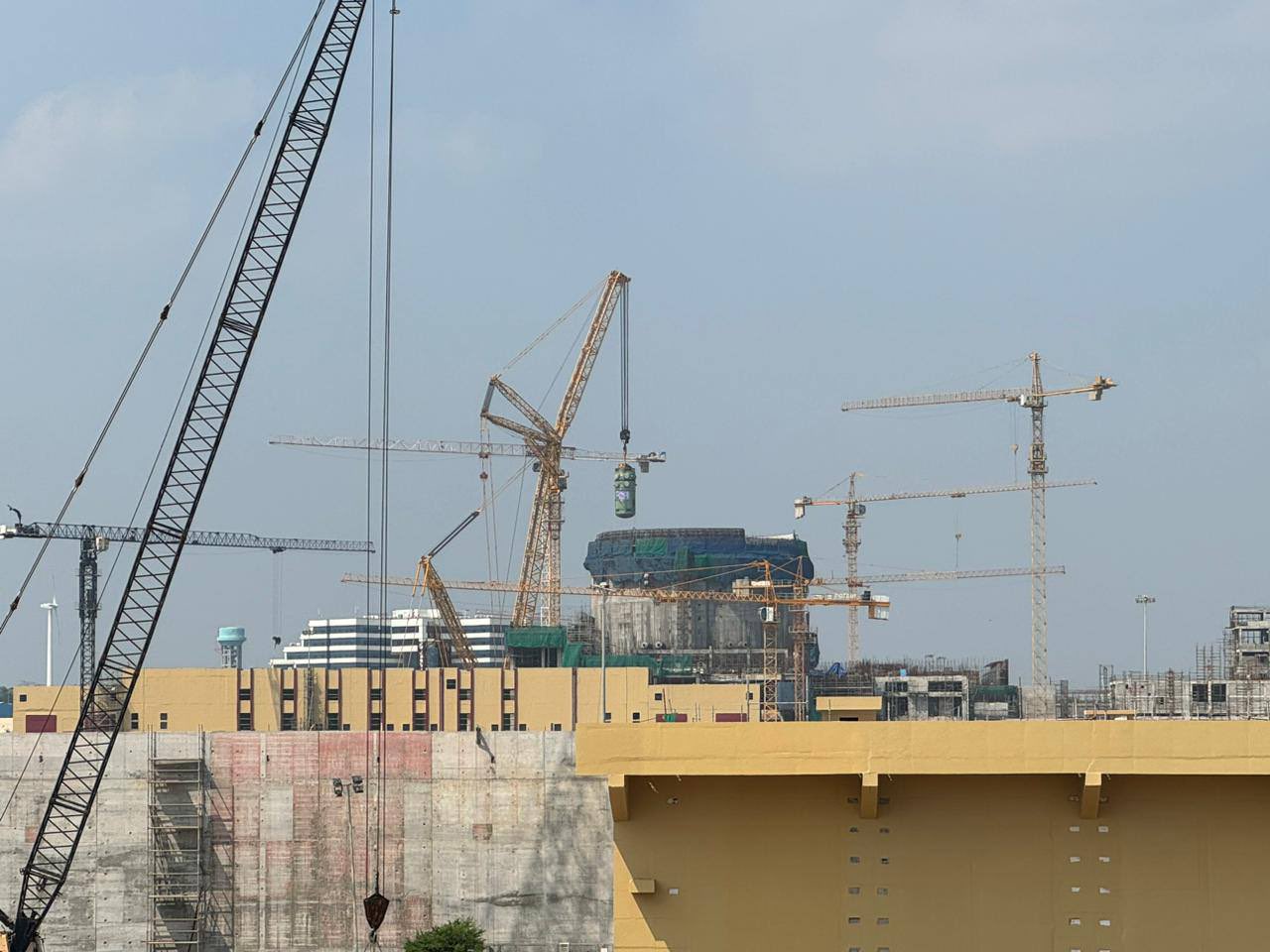India's Nuclear Push Gathers Steam With 100 GW Target by 2047, Rare Earth Mission and Global Mining Deals
India has laid out a roadmap to scale up its nuclear power capacity from the current 8,780 MW to 100 GW by 2047, backed by accelerated construction, advanced tech R&D, and private sector participation.
The Union government disclosed in Parliament that 24 reactors are currently operational, generating 56,681 Million Units (MUs) of electricity in 2024--25 -- around 3 percent of total national power output. Another 13,600 MW worth of projects are under construction, with a near-term capacity goal of 22,380 MW by 2031--32.
 |
| File Photo Source: Russia in India on X |
India is simultaneously betting big on rare earth minerals and critical raw materials essential for clean energy and defence sectors. Through its joint venture KABIL, the government has secured 15,703 hectares in Argentina for lithium mining, signed cooperation deals with over 10 mineral-rich nations including Australia and Brazil, and launched a Rs 16,300 crore National Critical Mineral Mission.
Efforts are also underway to operationalize domestic mines, with 227 exploration projects and 34 blocks auctioned for critical minerals. No rare earth imports were recorded in the last decade, while exports stood at a meagre 18 tonnes.
Nuclear Power Beyond Energy
India's atomic energy isn't just about electricity -- it's already embedded in healthcare, agriculture, defence, and space. The Department of Atomic Energy reported that radiation-based technologies have produced 71 high-yield, climate-resilient crop varieties, extended mango shelf-life to 35 days, and enabled eco-friendly refrigeration for perishables without diesel or electricity.
Radiation-based food preservation is already running in 28 facilities, largely in the private sector.
On the medical front, BARC has developed import-substitute cancer therapies using radioisotopes like Ruthenium-106 and Strontium-89, alongside linac-based sterilization of over 1 crore medical devices.
In defence, BARC’s Bhabha Kavach bulletproof jacket is now in use across armed forces. While current nuclear electricity is affordable (Rs 3.83/unit) and clean (49 million tonnes CO2e saved), the government also emphasized strict regulatory oversight in nuclear waste management, noting that India maintains zero backlog in disposal and no leak incidents in the past decade.
Kudankulam Site to Touch 6,000 MW
Kudankulam Nuclear Power Plant (KKNPP) remains central to India’s nuclear expansion, with four new reactors under construction to raise site capacity to 6,000 MW.
Power allocations from KKNPP-1 & 2 currently benefit Tamil Nadu, Karnataka, Kerala and Puducherry. Future allocations from KKNPP-3 to 6 are yet to be decided.
IPR Constraints and Patent Spin-offs
India’s nuclear IP cannot be patented domestically under the Atomic Energy Act, but DAE holds 235 Indian and 143 foreign patents, many of which have been commercialised.
These include innovations such as electronic voting machines, waste plasma pyrolysis, SHIVAY cold-chain systems, and magnetisable cellulose particles for filtration.
The nuclear sector’s multifaceted growth -- spanning energy security, tech exports, food and medical innovations, and international mining diplomacy -- signals a robust transformation under the banner of Viksit Bharat 2047.
